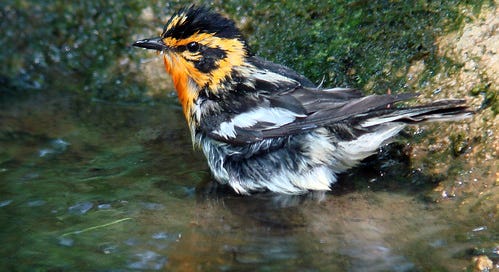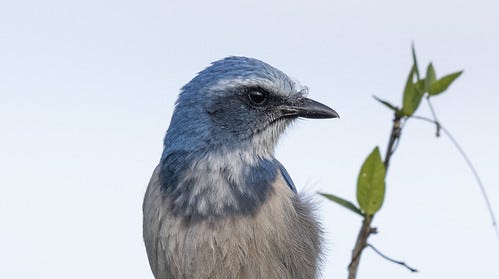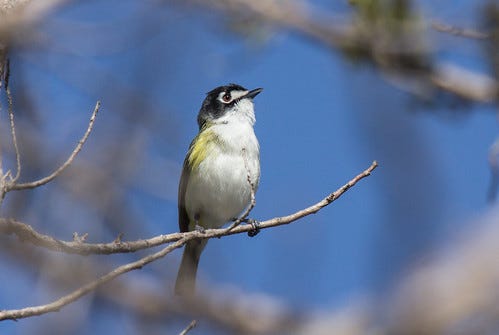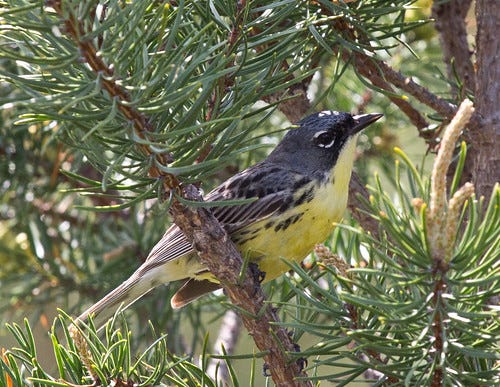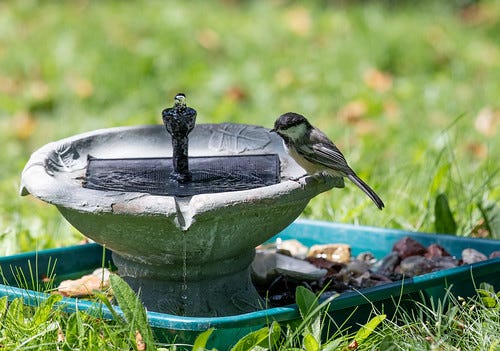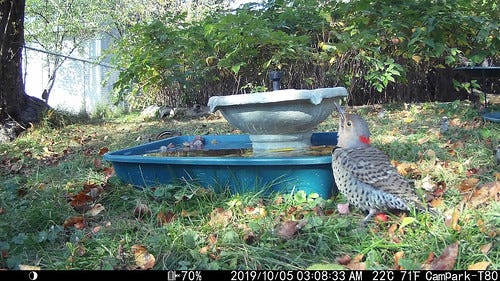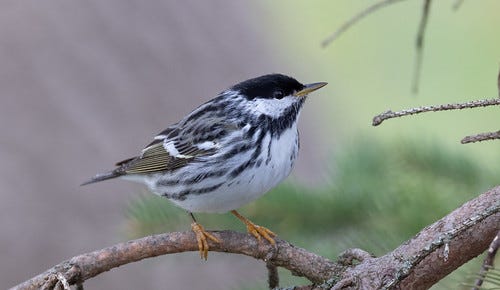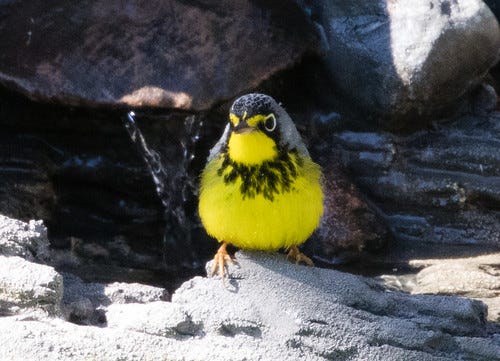(Listen to next Monday’s radio version here.)
Last week, when the Air Quality Index in my neck of the woods was in the orange and red ranges, I got an email from WDRT listener Kathy Neidert. She wrote:
I’ve been putting fresh water out on my deck for birds but am wondering if that’s safe to do with Canadian wildfire smoke & particulates in the air these days… I hope you’ll be able to advise me on this. Seeing & hearing birds gives me such joy!
Anything living out there, naked as a jaybird, without access to houses or other human-constructed shelter, must be well adapted to whatever nature dishes out, including fire.
There have always been major wildfires. Historically, many have been huge, but most are fairly small, often getting doused by rain before too many acres are burned. Fires keep some plants, such as junipers, in check while supporting new growth.
Some species, such as Florida Scrub-Jays, Black-capped Vireos, Kirtland’s Warblers (all three are endangered or threatened) and many grassland birds, require regular burning of their nesting habitat to provide the ideal vegetation structure.
But even birds who require fires to maintain nesting habitat lose their nests, eggs, nestlings, or small fledglings when those fires take place during nesting season. And the more massive the fires, the more adult birds can be killed, too.
As my college professors predicted half a century ago and Al Gore warned in 2006, global warming due to human activity has reached the point of no return and the effects are snowballing at ever accelerating rates. As of June 25, this is Canada’s worst fire season in modern history. July 3 was the hottest day on earth ever recorded until July 4, when that record was broken. Climate scientists are predicting more broken records all summer thanks to El Niño. The last El Niño was 2016, the hottest year on record, and it looks like 2023 may break that record, too. Thousands of human beings—or perhaps an order of magnitude or two more—have died already this year due to heat and smoke; these climate-related disasters are wreaking havoc on birds as well.
Even as we must do our best, individually and collectively, to reduce our use of all fossil fuels, we still owe it to ourselves and our families, neighbors, and friends—human and avian—to ease the pain in the here and now. Running air purifiers, heat pumps, and air conditioners to make our homes safer and more livable burns electricity—just part of the reason Russ and I invested in solar panels that won’t pay for themselves money-wise during our lifetimes.
As much as I love my family and want to protect them, I also love and want to protect my backyard birds. When smoke particulates are floating in the air, my chickadees, hummingbirds, and other dear friends breathe them in, and eat and drink what settles out of the air onto their food and water, and with their rapid metabolisms, birds are much, much more sensitive to toxins than we are. Setting out fresh water in a bird bath or shallow dish won’t collect more particles settling down from the air than natural water sources if we change the water every day or two, which we should anyway to prevent mosquito eggs from maturing.
I wasn’t thinking about fires and air quality this spring when I decided not to set out my own birdbaths—I was thinking about highly pathogenic bird flu. It’s not been too much of an issue for poultry farmers this summer, and with so much other extreme bad news, the national media isn’t keeping up with it, but wild birds are still getting infected, albeit we’re seeing fewer cases. As of 8:30 am this morning, July 7, the breakdown of the 85 wild birds infected in June and July as reported on the USDA’s Highly Pathogenic Avian Influenza in Wild Birds website was:
66 ducks
1 goose
1 cormorant
1 gull
3 terns
2 Turkey Vultures
9 Bald Eagles
1 Red-tailed Hawk
1 Great Horned Owl.
The birds of prey are all species that feed on waterfowl, so I think it’s fairly safe to fill our birdbaths if we don’t have waterfowl visiting our yards, provided we monitor them and stop providing water if we notice any sick birds. For the time being, I’m setting out my own birdbaths again.
With all the Canadian wildfires, warbler migration is almost certainly going to be kicking in early this year—another listener, Julie Miedke, had an adult male Blackpoll Warbler in late June, much too late for the north-bound migration, and Blackpolls nest where the fires have been worst. It’s impossible to know what has happened for the poor birds who nest in that enormous swath of habitat. Providing safe passage to any coming through our yards is the least we can do.


